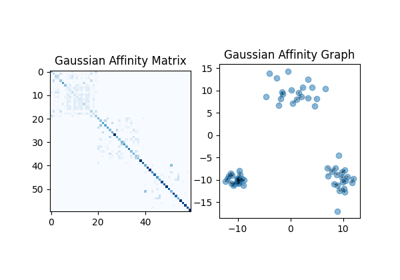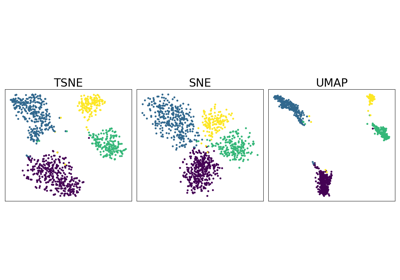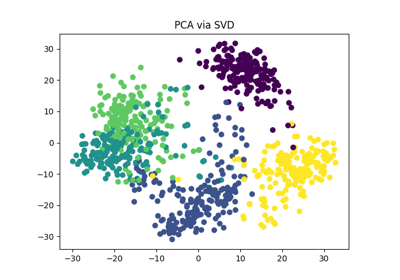Affinity#
- class torchdr.Affinity(metric: str = 'sqeuclidean', zero_diag: bool = True, device: str = 'auto', backend: str | FaissConfig | None = None, verbose: bool = False, random_state: float | None = None, compile: bool = False, _pre_processed: bool = False)[source]#
Bases:
Module,ABCBase class for affinity matrices.
- Parameters:
metric (str, optional) – The distance metric to use for computing pairwise distances.
zero_diag (bool, optional) – Whether to set the diagonal of the affinity matrix to zero.
device (str, optional) – The device to use for computation. Typically “cuda” for GPU or “cpu” for CPU. If “auto”, uses the device of the input data.
backend ({"keops", "faiss", None} or FaissConfig, optional) –
Which backend to use for handling sparsity and memory efficiency. Can be: - “keops”: Use KeOps for memory-efficient symbolic computations - “faiss”: Use FAISS for fast k-NN computations with default settings - None: Use standard PyTorch operations - FaissConfig object: Use FAISS with custom configuration
(e.g., FaissConfig(temp_memory=2.0))
Default is None.
verbose (bool, optional) – Verbosity. Default is False.
compile (bool, optional) – Whether to compile the affinity matrix computation. Default is False.
_pre_processed (bool, optional) – If True, assumes inputs are already torch tensors on the correct device and skips the to_torch conversion. Default is False.
Examples using Affinity:#

Entropic Affinities can adapt to varying noise levels

Neighbor Embedding on genomics & equivalent affinity matcher formulation

